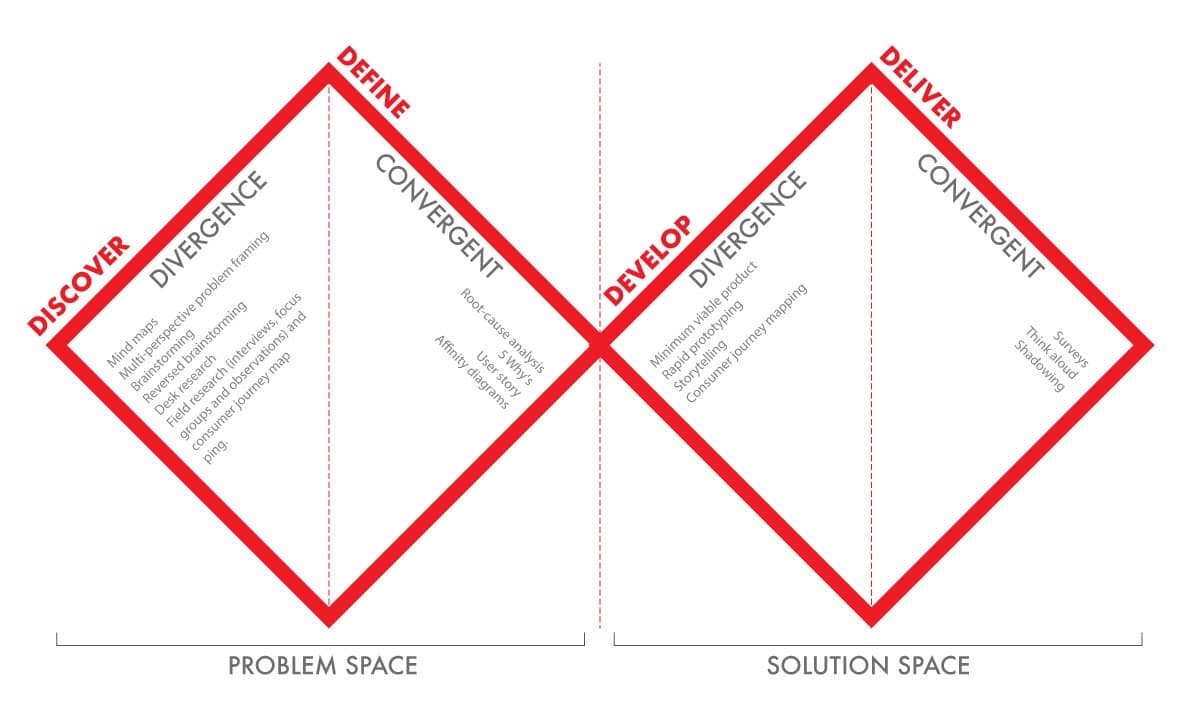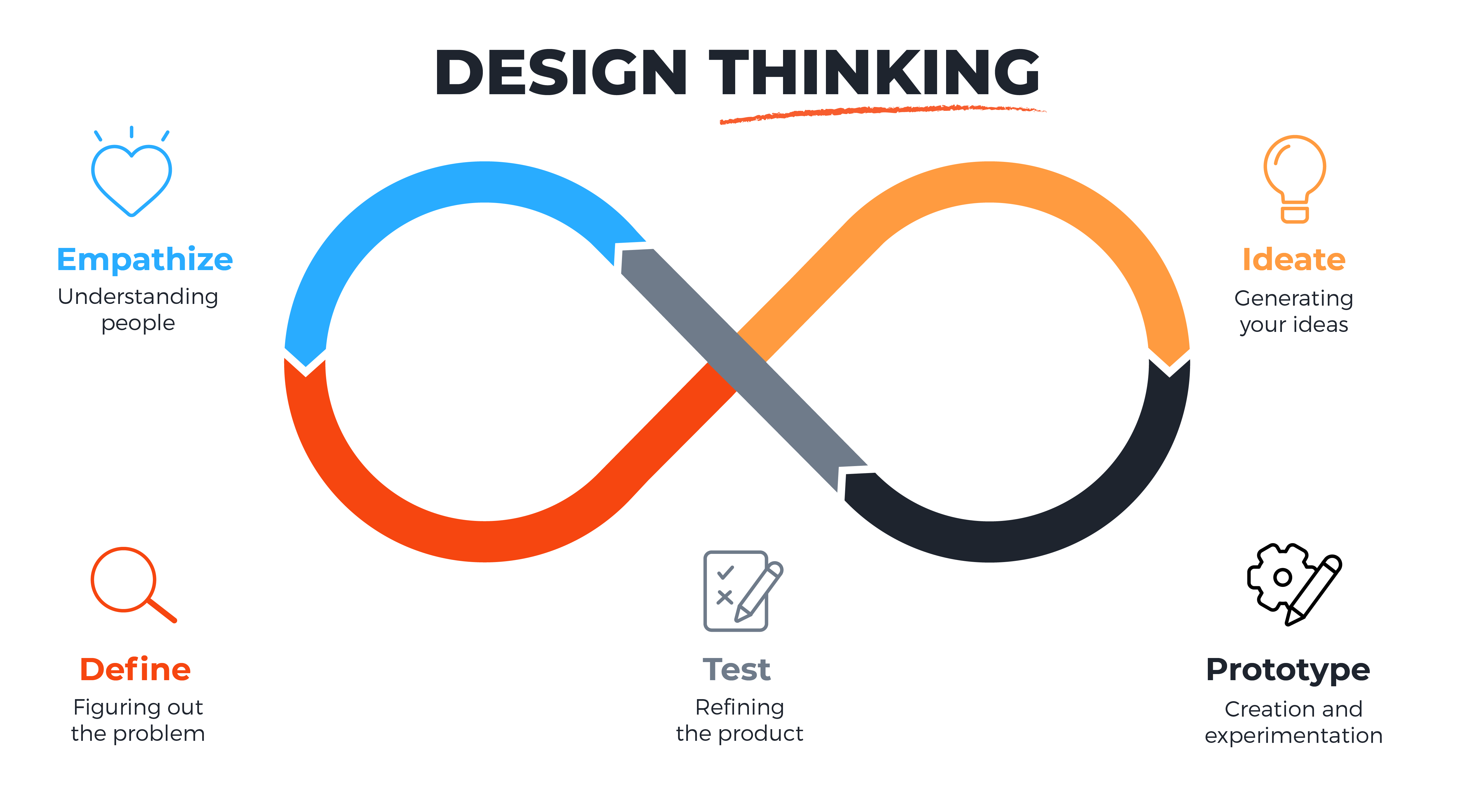Design Thinking is an powerful Methodology manner to resolve an problem. The layout questioning approach is a way or technique for drawing close an problem strategically. Design Thinking approaches, frameworks, and gear are available in lots of forms. The gear for the Design Process are applied at numerous stages of method to cope with the hassle quickly. Some strategies include their personal gear, whilst others don’t. Some strategies are sequential, whilst others are iterative. In this realm of layout questioning approaches, we try to explain as many strategies and gear as feasible withinside the method menu.
Design questioning is a way for drawing close complex demanding situations in a innovative and person-targeted manner. You can advantage know-how in those methodologies thru numerous layout questioning certification publications to be had online. The following are key traits of the layout questioning method:
- Concentrate on the end-users. All critical product design decisions are reviewed according to the end user’s needs and wants, which is an important part of the design thinking process.
- Problem framing is considered an excellent part of design thinking. Rather than accepting the problem as it is, designers investigate the problem space in search of an underlying cause. Designers can use the knowledge they gather to reinterpret the challenge.
- Developing practical solutions. Instead of using presentations and PowerPoint decks, use sketching and prototyping to communicate design concepts.
Double Diamond Plus
This approach is each famous and novel. The double diamond technique is one manner of showing the layout technique, because it depicts how designers paintings thru 4 crucial levels: discover, outline, develop, and deliver. For beginners, , they make room for a extensive variety of latest thoughts to be located and shared. They then useful resource in figuring out and defining precedence regions to cope with via way of means of focusing on person needs. Following that, a clothier will create numerous prototype answers primarily based totally at the recognized possibility regions. Finally, they may focus on precise dreams in addition to production or different regulations on the way to produce a very last answer.
4D

This system is just like the only used previously. The 4D Methodology splits a task into 4 levels: discovery, layout, improvement, and deployment. We want to discern out what we’re searching after first. The drawing level follows, for the duration of which layout and ideas are evolved. In the very last step, the task can be completed.
DeepDive
DeepDive is another approach that is more likely to be a tool than a methodology. This is a good one to use if you want to delve into a topic thoroughly. The DeepDiveTM is a method that combines brainstorming, prototyping, and feedback loops into a method that managers may use with their teams to help them find answers for specific business problems. We begin by gaining an understanding of the market, client, technology, and constraints. Actual people in real settings are seen in the second level. The ultimate customers and new-to-the-world concepts are then imagined. Prototypes are then refined and tested. Finally, we implement a novel commercialization strategy.
Stage-Gate
This technique is designed to assist us increase and take advantage of new items. It presents a roadmap with clean levels and selection factors to manual task groups and control thru the volatile technique of turning a idea right into a usable product. Gates are places wherein a designated control group (the gatekeepers) comes to a decision whether or not or now no longer a task need to proceed.
Pentathlon
The Innovation Methodology” interacts with the surroundings and human beings, making it one of the maximum critical methodologies a few of the others. Without the scale and levels of creativity involved, the Pentathlon framework outlines 5 critical elements of innovation control: thoughts are created, a few are picked and evolved into concepts.
5D
This one is a hybrid of the 4D and Double Diamond games. This is just like 4D however takes matters a step further. The 5-Phase 5D is a system-constructing version primarily based totally on a tried-and-proper method. This system has been evolved to permit access at any factor for the duration of the lifecycle of your provider or product. We start via way of means of accumulating all reachable records and brainstorming thoughts. Second, we paintings on growing a method for interaction. We subsequent flip all of our thoughts into paper sketches and behavior a usability test. After that, the belief is fleshed out. The product is ultimately examined and shipped on the quit of the technique.
Herbert, Simon
Simon Herbert is another linear and non-iterative approach. Define, research, ideate, prototype, choose, implement, and learn are the seven stages that Simon Herbert divides a project into. The steps aren’t sequential; they might happen at the same time and be repeated.
Bootleg Bootcamp (Stanford)
This method is one of the few completely described strategies with its personal set of gear. This approach is recommended for complicated layout projects. You have to realise the human beings for whom you’re growing as a human-targeted clothier. When you’re in outline mode, you’re breaking down and synthesizing your empathy findings into compelling necessities and insights. The described mode is critical to the layout technique because it states the hassle you’re trying to resolve together along with your efforts. The technique of producing thoughts is called ideate. Prototyping is the technique of moving thoughts and experiments out of your head to the bodily world. Prototyping is historically concept of as a manner to check functionality. Testing presents us with the ability to beautify and enhance the derived answers.
Donut
Donut is a round and iterative method this is a few of the linear approaches. It starts with the layout quick after which circulates till the hassle is solved. The hassle-fixing technique is split into 4 regions via way of means of the Iterative Design Process Cycle: hassle identification, hassle selection (reframing and contextualization), answer identification (converging and figuring out center person needs), and answer selection (experimenting and prototyping). The first step consists of studies techniques inclusive of occasion mapping, literature evaluations, and private observations. The group is tasked with compiling the records they’ve collected and looked for styles withinside the information during the hassle-fixing level. The group then considers the information and its which means for the receiver, then determines which of the receiver’s needs have to be addressed. Finally, the group develops gear to cope with the consumer’s needs and makes use of prototyping to decide how correctly or poorly the device meets the ones dreams.
Chaos in a Circle
This approach is circular, as its name implies. It is another iterative design thinking process that is quite detailed and involves contact with both internal and external stakeholders. Product innovation procedures assist businesses in developing and introducing new products that people want to buy and use.
Spiral
Another way is a spiral methodology, which circulates until the answer is found. As you can see, each circulation leads to a prototype and then to the product’s release. The spiral model is a software development technique that incorporates elements of both design and prototyping-in-stages in order to combine the benefits of both top-down and bottom-up approaches. The spiral approach blends iterative development (prototyping) with the waterfall paradigm’s systematic, regulated characteristics. It allows for incremental product releases or revision as the spiral is circled again and again.
Designing for expansion
At various stages of the design process, this methodology has its own tools. Among other approaches, it is the most comprehensive. With its narrowing shape, it also demonstrates how the design thinking process works. The design process is identified by these four questions. The 10 tools are designed to help you generate new opportunities and reduce risk as you handle the inescapable uncertainty that comes with development and innovation.
V-shaped methodology
This extraordinary round technique makes use of verification and validation to attach every level. The V-Model is a structures improvement paradigm that pursuits to make complicated structures extra understandable.
It is utilized in structures engineering to layout a standardized method for product or task improvement. After the coding phase, the technique is going upwards, forming a conventional V shape, in place of flowing down in a linear fashion (as withinside the waterfall version).
If the idea of Design Thinking appears exciting to you, then choosing Stanford Design Thinking Certificate route from Great Learning will stand because the satisfactory preference to pursue a profession on this domain.
